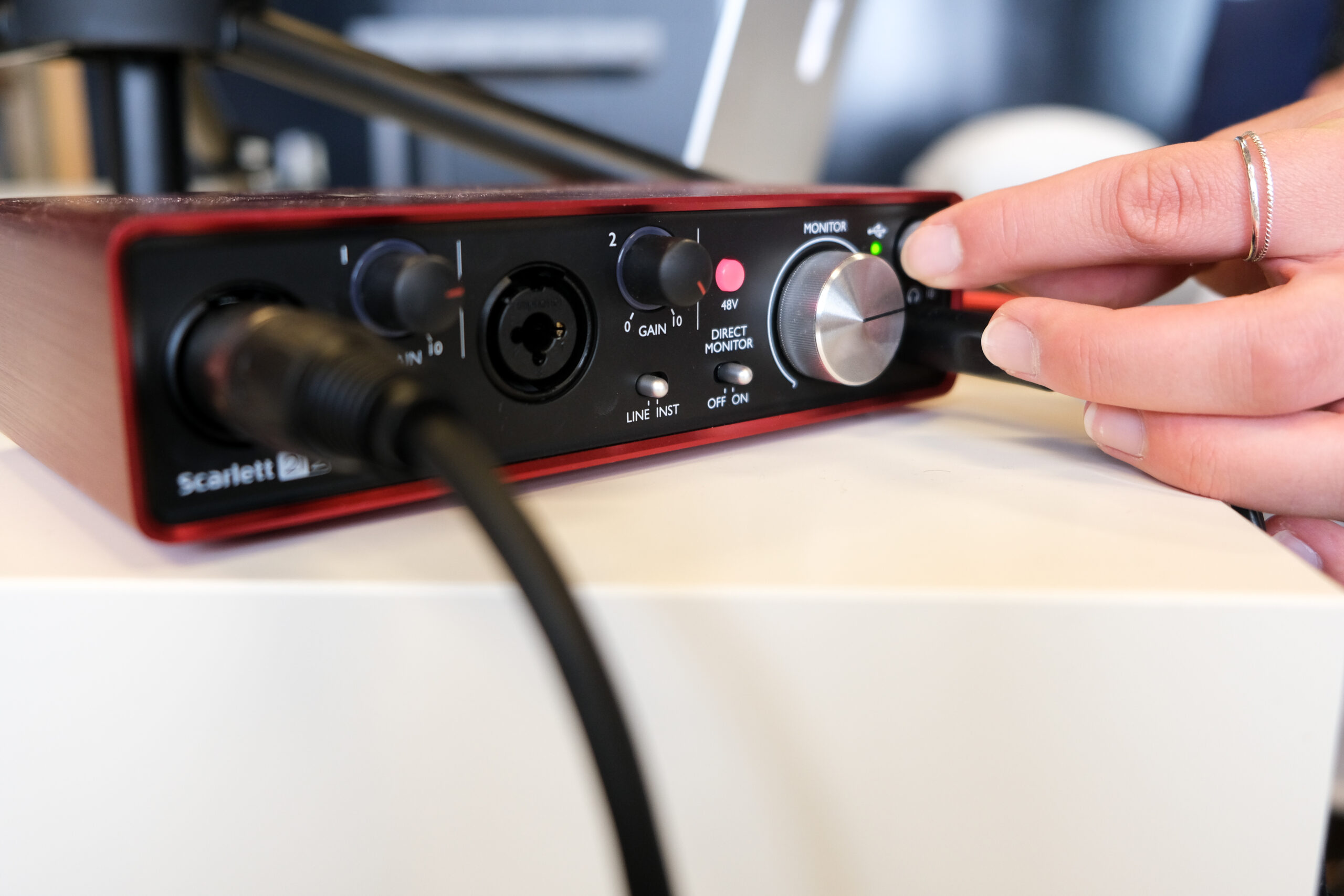Sales velocity can be an important indicator of success in any sales team. It’s a measure of how fast a business is making money, and sales enablement practitioners can use it to evaluate a team’s opportunities for improvement. In addition to average length of sales cycle, the sales velocity equation takes into account the number of opportunities, win rate, and the average deal value of a team or group.
Sales Velocity = (# of Opportunities × Win Rate × Average Deal Size) ⁄ Sales Cycle Length
Even though it is a critical metric for sales leaders and enablement practitioners, velocity can be misleading. It’s natural to think that the solution is simply to sell more and sell faster. As a result, strategies employed to increase velocity focus too heavily on shortening cycle length, sometimes at the expense of the other three metrics. In reality, increasing the number of leads, win rate, and average deal size is just as important.
“When we say the word velocity, even outside of the sales world, the first word that comes to mind is speed,” said Mark Riley, sales enablement director at Handshake. “But it’s also about energy, energy in a deal cycle as it progresses forward.”
When building initiatives to drive velocity, there is a tendency to adopt a mindset of abundance: more goals, more training, and more content. Instead, stepping back and evaluating current resources and data trends, leveraging partnerships, and developing a strategy to influence each piece of the velocity equation may be more effective in boosting the velocity of sales teams. Formulating a strategy that effectively addresses each component of the velocity equation can help transform the performance of an organization.
Form Partnerships to Understand the Data and Create a Strategy
Sales is a group effort. As skilled problem solvers, enablement professionals can add tremendous value to sales goals – like velocity – by connecting the dots between cross-functional teams to form strategic partnerships. With sales velocity specifically, sales operations, marketing teams, and executive leaders can be essential partners for enablement to collaborate with.
Enablement practitioners and sales operations especially have a similar goal when it comes to influencing sales performance: to help reps be successful and efficient. That’s why strategic partnerships between enablement and operations can strengthen both teams. Partnering with ops is pivotal for not only getting key metrics, but understanding them, creating a data-driven strategy, and implementing change. Sales operations can help define key metrics such as the lead-to-opportunity ratio, percentage of leads or opportunities in each stage, and weighted pipeline value, as well as uncover how trends emerge across metrics and how they may contribute to velocity.
Additionally, strategic partnerships with marketing teams can help accelerate velocity by ensuring that reps have easy access to great content. Marketing and enablement can work together to initiate a content review to keep pitch decks up-to-date and make sure that reps are equipped to customize content to fit their client’s specific needs. Enabling reps to easily have all materials prepped and accessible before a call helps them be more efficient and effective.
Finally, enablement can lean on leadership. Aligning with higher-level company initiatives may help provide insight into which direction to focus enablement’s efforts. Sharing outcomes of velocity-boosting initiatives with leadership will help demonstrate enablement’s value addition to the business and help gain support for future roles and projects. Collaborating with teams across the entire organization can amplify enablement’s impact, and partnerships with these three teams can provide a solid foundation for building a strategy to influence sales velocity.
Think Critically About the Pain Points of the Team
A team’s velocity doesn’t just switch between fast and slow. It’s important not to oversimplify this metric by looking at the sales velocity of a team overall but instead by assessing how individual performance is shaping the aggregate data.
Often, business leaders compute the velocity equation and think that most of the organization is working at this level. However, in sales organizations, there is often a small group of reps doing very well and many more struggling, causing skewed averages for metrics such as average win rate. The 80:20 rule, also known as the Pareto Principle, refers to a small proportion (approximately 20%) of reps generating 80% of the revenue. In the past, this phenomenon could be brushed off as status quo, but it is harmful to team sales performance.
Determining best practices of quota-attaining reps and finding ways to replicate successful behaviors can help move teams toward sustainable velocity. For example, practitioners can use high-level metrics such as average deal size, win rate, or length of sales cycle to identify where reps are succeeding and then analyze the “why” behind successes by assessing behaviors and activities that correlate with improved performance. Once enablement knows where the pain points are occurring and what is driving success among some sellers, they can turn strategy into execution.
“For enablement practitioners, we look at a few questions,” said Riley. “Can we replicate good practices? Can we replicate what is working? What is driving velocity, what is driving speed, and what is driving energy?”
Adjust content strategy to guide reps towards content that is proven effective or towards training with insights specific to problem areas. Remember that more isn’t always better; be strategic and focus on one or two development opportunities at a time to avoid overwhelming sellers.
Slow Down to Speed Up
When setting sales velocity goals, telling reps to increase their velocity or to “sell faster” can result in less efficiency and productivity. Most deals don’t follow a straight path from A to Z; the sales process is complicated, and reps that can slow down and take the time to address all the complexities of the solution typically outperform their peers that are rushing to close. Instead of treating the sales cycle like a sprint, coach sales teams on the strategies that may lead to marathon-sized outcomes.
It all begins with leads. Focus on developing high-quality leads rather than large numbers of them, as having leads that are worth following up with is key for the most efficient use of time and resources. Additionally, focusing on quality leads can boost the proportion of opportunities that continue to move through the pipeline.
Most reps have been told time and time again how important discovery is, but not all know the importance of continuous discovery. While traditional sales training emphasizes strategic questioning in the first half of the sales cycle, continuing to ask questions throughout can help identify pain points that wouldn’t otherwise be uncovered. Understanding all aspects of the customer’s current business problems pays off in terms of higher deal sizes, higher win rates, and more opportunities to cross-sell.
“Discovery goes throughout the deal cycle,” said Michelle Shalvey, director of enablement at Rafay. “It isn’t a stage; it’s the entire deal.”
According to recent research from Gartner, strategic discovery helps sellers establish credibility, shows that they are invested in the customer’s unique business problems, and allows them to more accurately assess the chances of winning the deal. Deeper understanding and higher trust between buyers and sellers lead to more closed deals.
Demonstrate How the Solution Adds Value to Both Individuals and Organizations
Buyers have more power than ever to search for product information on their own and are surrounded by sellers seeking their attention. To maintain high velocity, sales teams need to be efficient and strategic in their approaches. Buyers need to know why a solution would be valuable to their business, and they want the insights to prove it. Enablement can help boost velocity by encouraging reps to introduce their product’s unique value proposition after strategic questioning but early enough to be impactful in the buyer’s decision process.
Though it’s easy to be hyper-focused on the product and how it can improve our customer’s life day-to-day, to move to the close, sellers have to be diligent about communicating the value of investment to someone with the power to make the purchasing decision. Sellers should be attempting to align with someone with decision-making authority before even getting to the demo stage.
“It’s about that value conversation and how we get everything tied to that next step in the sales process,” said Shalvey. “The only thing I want my team demoing is anything that has a metric with a ‘wow’ factor. You need to pick a greatest hit and make it valuable to who you’re talking to.”
Encourage a value-based approach to selling where salespeople can focus on benefits that are easy to understand and relevant to the buyer. Additionally, thinking of the conversation as exactly that, a conversation, will help reps to build trust and help customers understand their product in an appealing, not pushy, way. Use value-based conversations to communicate how a solution has the potential to solve business problems on a large scale.
“It’s about identifying the way that the products and services we provide impact an entire organization, and not just the individual that we’re talking to,” said Shalvey.
Train reps to fine-tune messaging to their audience in each stage of the sales process. Share high-level organizational impacts with C-Suite executives, and leave the more detailed team or individual-level value propositions to the potential end-user conversations.
Understanding sales velocity can be instrumental in driving revenue growth for an organization. Breaking down velocity by each core component of the equation – the number of opportunities in the pipeline at a certain point, win rate, average deal size, and average cycle time – give insights into the overall health of the sales organization and opportunities for growth. Enablement can begin to influence by leveraging strategic partnerships, identifying and solving the team’s pain points, and helping reps develop discovery-focused and value-adding approaches to selling.







